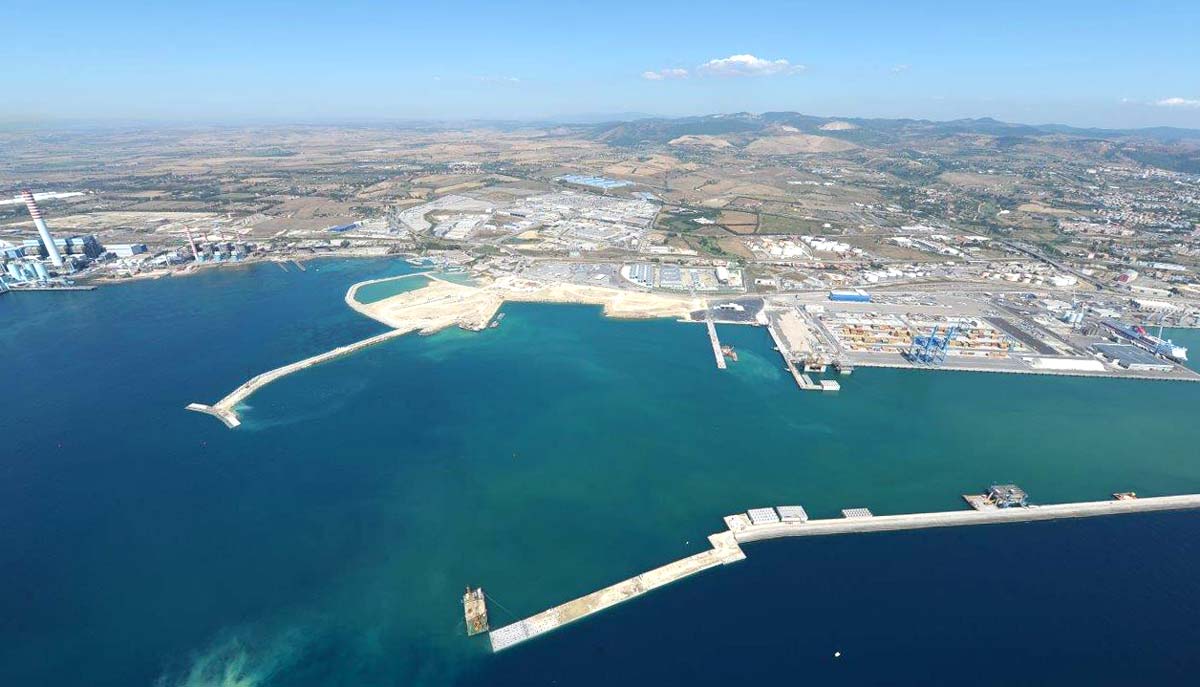1st Operational Lot of the Strategic Works – extension of the C. Colombo Detached Mole, Ferry Dock and Service Dock. Checking of compliance and implementation.
Client: Port Authority of Civitavecchia
Period of implementation: 2008/2011
Total value of works: Euro 158.000.000,00
Value of our services: Euro 2.000.000,00
Checking of compliance
The Final Design of the 1st Operational Lot of the Strategic Works of the Port of Civitavecchia concerns the design of the Ferry Dock, Service Dock and the extension of the Colombo detached mole.
The response to the environmental requirements set forth in preliminary design regarding the 1st Operational Lot was presented to the Ministry for the Environment and the Protection of the Territory and the Sea as a “Report on compliance with the requirements contained in the CIPE document for approval of preliminary designs”. In particular, the compliance report covered the following aspects:
Navigability trials: the study on navigability regarded the simulation of 2 entry and 2 exit movements in adverse weather sea conditions (sea and wind) for three types of ships.
Analysis of sediment: presentation of the results of chemical, physical and biological analyses undertaken on 48 samples taken from the areas planned for the construction of the Ferry Dock and Service Dock, aimed at their profiling pursuant to Ministry Decree 471/99; in particular, these regarded the microbiological analyses on sulphite-reducing clostridium spores, the chemical and physical analyses regarded particle size and residue at 105 °C, while chemical analysis regarded metals, polychlorobiphenyls, polycyclic aromatic hydrocarbons, organochlorine pesticides, organic carbon and C12 hydrocarbons.
General plan for the landscape-environmental improvement of the Port of Civitavecchia: the guidelines and zones were defined for establishing parks in the port area with the following aims:
- aesthetic and landscape reasons, for the better insertion of the port structures in their environmental context;
- containment of air pollution and in part of noise pollution, thanks to the biotechnical features of the vegetation;
- increase in the ratio between permeable/impermeable areas, with consequent benefits for the surface water and groundwater system;
- improvement of the local microclimate, depending on the evaporation and transpiration mechanisms of the vegetation.
Hydraulic study for the analysis of the quality of inland waters: the hydraulic study was conducted in order to analyze the quality of the water inside the Port of Civitavecchia in its current configuration and in the layout planned with the construction of the Strategic Works; in particular, with the following:
- assessment of the natural circulation patterns of the water in the port in the current situation (self-cleaning capacity);
- assessment of any changes that might result from the port works contained in the Port Planning Scheme with respect to the natural cleaning capacity.
In order to achieve these aims, suitable numerical simulation models forming part of the SMS system were applied (system developed by the United States Army Engineering Waterways Experiment Station”). In particular, the RMA-2 (hydrodynamics) and RMA-4 (diffusion and transport) codes were used in sequence.
Atmospheric impact: modelling of air quality levels was undertaken, considering the overall emission impact of maritime and vehicle traffic in the most difficult operational conditions and in the port configuration after completion of the Ferry Dock, the Service Dock and the extension of the Cristoforo Colombo detached mole (scenario after completion).
Acoustic impact: specific simulations were developed to assess the acoustic impact of the single construction phases.
Checking of implementation
In line with the requirements contained in the CIPE resolutions for approval of the final designs of the 1st Operational Lot, for purposes of undertaking the Checking of implementation, the following projects were added to the Detailed Design of the works:
Replanting of one hectare of Posidonia oceanica: in order to fulfil the tender requirements for “assignment of the service for uprooting Posidonia oceanica shoots from the seabed between Punta S. Agostino and Punta Mattonara in the Port of Civitavecchia and replanting these shoots in the seabed between Punta del Pecoraro and Cape Linaro on the Santa Marinella seafront, including the services of 5-year georeferencing, mapping and monitoring”, consultancy was provided for the drafting of the contracted services.
Refurbishing and improvement of trenches: the aim of the project for refurbishing and improving the trenches was to ensure the hydraulic safety of the stretch of shoreline in the Municipality of Civitavecchia coming within the jurisdiction of the Port Authority, in order to avoid possible flooding linked to especially heavy rainfall that could cause damage and difficulties for the port activities with a view to the extension of the infrastructure promoted with the construction of the Strategic Works.
Improvement works for the “La Frasca” pine wood: the Detailed Design for improving the pine wood involved the following measures:
- actions for the agricultural, soil and forestry improvement of the pine wood, on the basis of vegetation and plant health investigations, through selective thinning and new planting;
- construction of a cycling and pedestrian path;
- construction of three parking areas outside the pine wood area.
Recovery of the Cappelletto, Columna and Torre Bertalda archaeological sites: the measure regarded the improvement of the archaeological areas identified in the zone called “La Frasca”, located to the north of the Port of Civitavecchia. The coastal strip considered was identified for the recovery of three large areas: Cappelletto – Acque Fresche Area, Columna – Porto Canale Area and Torre Bertalda Area.
Detailed Plan for the monitoring of air quality: the Plan was set up in order to profile the quality of the air during the construction of the Strategic Works – 1st Operational Lot. The work methodology involved the following stages:
- execution of the preliminary activities for starting up environmental monitoring;
- execution of measurement procedures, with the characteristics of the instruments and data processing criteria;
- procedure for rendering the measured data, including the criteria for editing the documentation produced and the criteria for the preparation and management of files;
- criteria for the interpretation of the data collected.
Detailed plan for monitoring the acoustic climate: the Plan was drawn up in order to assess the status of noise pollution in relation to the existing sources in the local area and the new sources introduced with the construction and operation of the Strategic Works 1st Operational Lot; in particular:
- to assess the significance of the contribution of the activities regarding the works of the 1st Operational Lot, with respect to those of the other main sources in the area;
- to check the acoustic impact forecasts in the construction and operation stage and validate the project requirements adopted for acoustic protection;
- to verify the respect of the threshold values indicated by regulations, with regard to acoustic pollution;
- to guarantee the checking of special situations;
- to promptly identify the possible critical aspects and arrange the suitable mitigation actions;
- to implement a database on computers to demonstrate and verify the effective respect for the surrounding environment during the various construction and operational phases.




